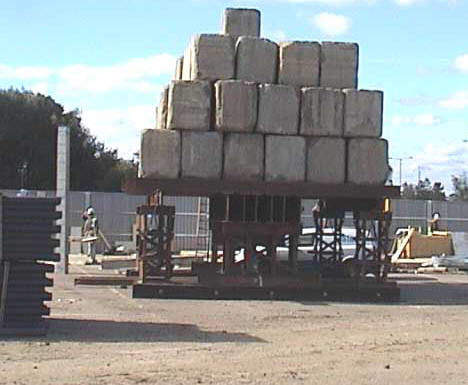|

| |
     
| |
Since formation of the company the majority of our project work has been
focused around the geotechnics of various structures. This has been mainly due
to the huge amount of building work along the "M62" corridor since 2003.
Several examples of our project experience are cited below:
|
|
|
Under the DFeS and
on behalf of Buro Happold Engineers work has been undertaken on
five National Academy sites in North Linclonshire,
London, Nottingham and Manchester. For these
geo-environmental interpretative reports were prepared and a
variety of foundation types were recommended. Other issues such
as ground gas, contamination, top soil quality and the potential
for sustainable urban drainage systems were also considered. |
|
 |
|
 |
 |
|
 |
Due to relatively complex ground conditions (comprising
made ground, superficial deposits and a steeply dipping rockhead)
observational techniques were used to determine the base depths of the
piles sunk for the Leith Street Bridge in Edinburgh. This
involved on-site inspection of the arisings from each pile and liaison
with the structural designers. |
 |
|
 |
|
The foundations for the proposed new-build
part of the Royal Mills redevelopment in Ancoats, Manchester
were designed a raft but, due to be presence of low-permeability sand
and silt bands within the glacial till, variable soil strength was anticipated. Therefore, in situ testing was undertaken to verify that
the material underlying the raft met with the design criteria.
During construction there were also some problems
regarding of flow
failure of softened soils between the contiguous piled wall. The
reasons for this were investigated and remedial measures were
recommended. |
|
 |
|
 |
 |
The foundations of the new
multi storey car-park at Edinburgh Airport, formed over 5m of
soft alluvium over stiff to hard glacial till, were formed using driven
pre-cast concrete piles. Project supervision was undertaken, The
installation and testing of these was supervised. In addition, the
driving records and load test results were used to verify that the capacity
of the installed piles was adequate for the proposed vertical and
moment loads. |
|
 |
Due to a relatively shallow rock surface below most
of the
proposed Chapel Wharf Development in Manchester and the considerable
saving, both in terms of cost and time, should it be possible to use
spread spread footings the ground investigation
was designed to assess the elastic properties of the upper parts of the
Chester Pebble beds formation (where limited core is usually recovered)
using a High Pressure Dilatometer, or Pressuremeter. |
 |
|
|
To aid preliminary project planning
ground investigation and preliminary design of a sheet piled wall was
undertaken for a Basement car park to be constructed off Great
Ancoats Street, Manchester. As the piles would need to be
driven into a stiff clay a good deal of research was done into the
possibility of using this construction method in an urban environment
close to old masonry structures. |
 |
| |
|

